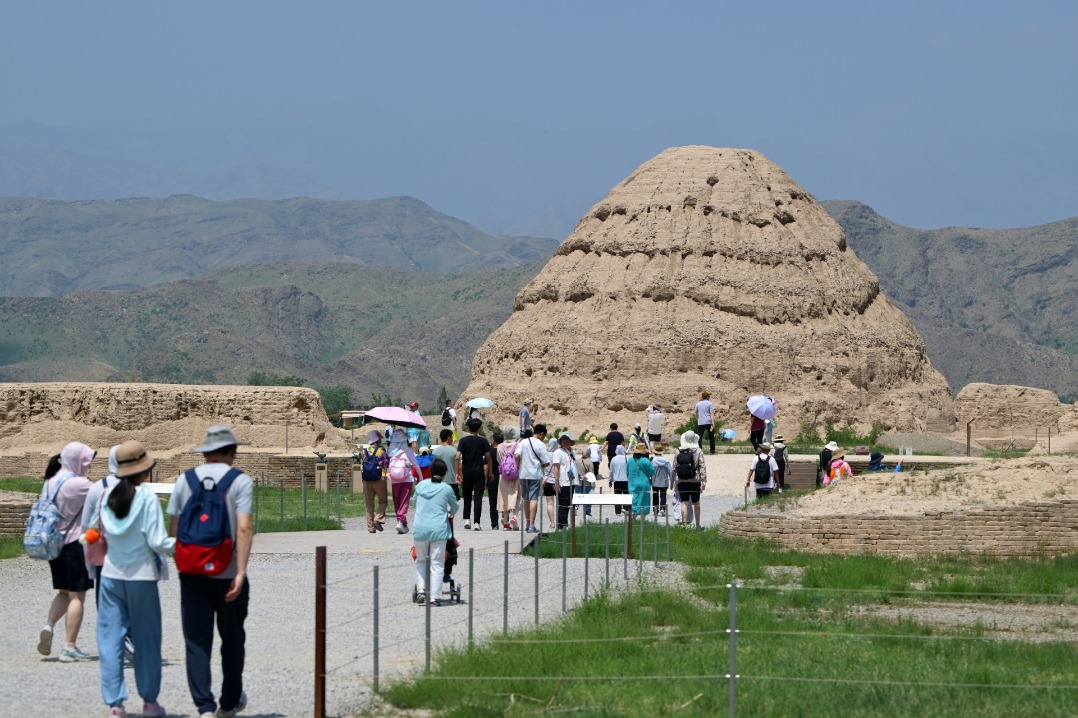How a desert branched out to become Beijing's guardian

 |
| Firefighters take a break during a training exercise in Saihanba. [Photo by Zou Hong/China Daily] |
Despite the initial breakthrough, progress was halted several times in later years.
The workers were devastated when glazed frost hit in October 1977, destroying 38,000 hectares of forest in a single night.
Yin remembers the scene vividly.
"The moment the freezing rain fell onto the tree branches, it formed a transparent coating of ice. The tallest trees must have sustained weights of up to 250 kilograms. The long night was interrupted by the sound of cracking, as branches broke off and fell to the ground," she said.
That disaster was followed by a long drought in the 1980s and a number of plagues of insects in the '80s,'90s and 2000s. There was also a serious rat infestation in the spring of 2013.
Throughout the setbacks, the team continued to plant trees. By the end of 1982, the area under cultivation was estimated at 63,000 hectares. Today, the figure has risen to 68,000 hectares.
"With almost no flat land left, over the past five years, we've been trying to plant trees on rocky mountain slopes, where the topsoil is less than 15 centimeters thick," said Fan Dongdong, 33, who arrived in Saihanba in 2007, immediately after graduating from Hebei Agricultural University, 500 km away.
"We chose Scots pine, a species accustomed to cold, arid climates. Once established, its ever-extending roots reach deep between the rocks," he said. "But before that, we have to give the saplings a home by digging a hole about 40 cm in depth and 70 cm by 70 cm in cross section."
The process is harder than it sounds: The rocks are so large that earthmovers are used to move them. When the machines hit the rocks, the sparks and plumes of white smoke can be seen from the foot of the mountain.
"The space left is filled with black soil we take from another part of the forest. The soil is so precious-in many other parts of Saihanba, you get white sand under a thin layer of soil-that we put it in our cupped hands and pour it carefully into the hole, not wanting to waste even a pinch," Fan said. "The mountain slope is too steep for the kind of tree-planting machines used in 1964. Everything must be done by hand."
According to Fan, hand-planted trees account for 90 percent of the forest's total.
"When I first arrived, no one seriously thought I would stay, but I proved them wrong. The conditions here are a hundred times better than they were half a century ago, but it can still be testing. The winter is still forbidding, as is the loneliness," he said.
Fan lives with his young wife in the forest. They married last year and she is now seven months pregnant.

































